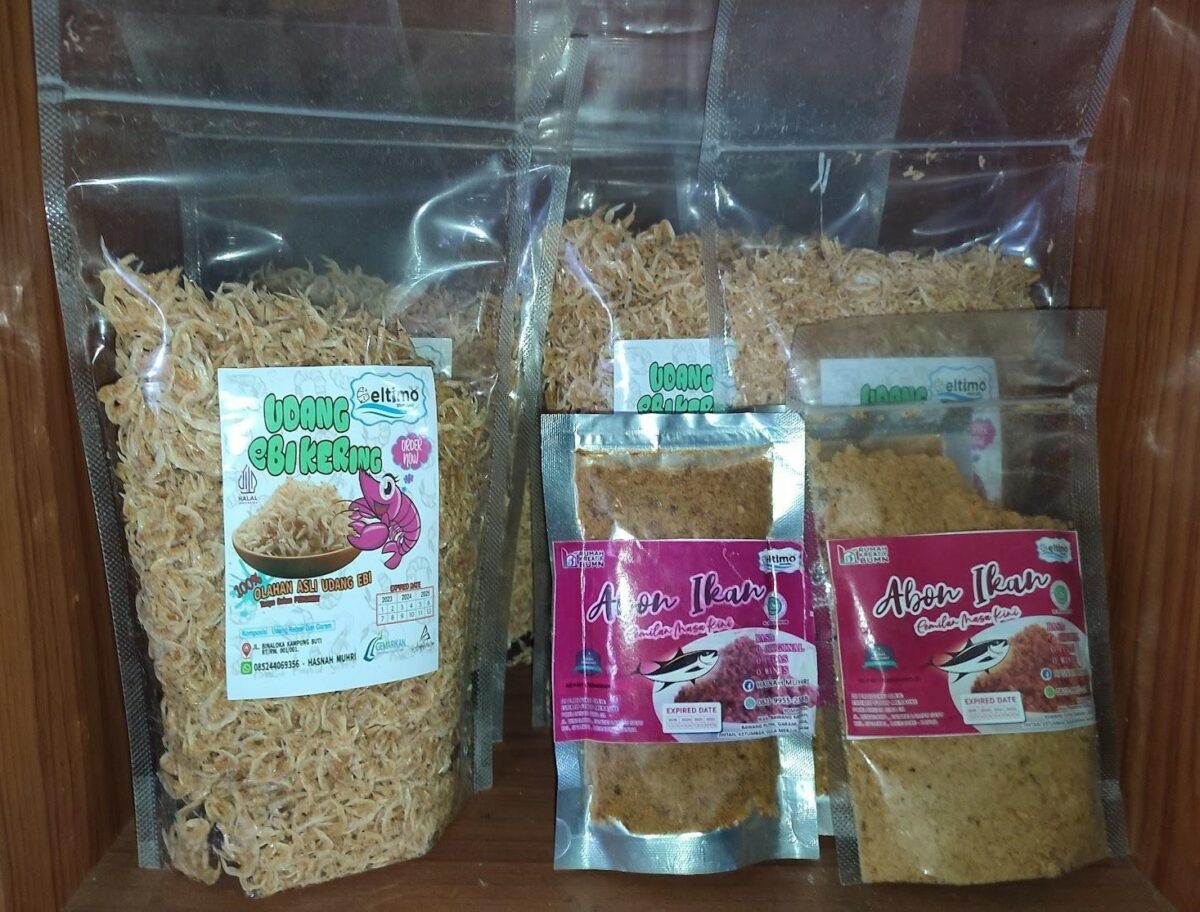Merauke, situated at the easternmost tip of Indonesia in Papua Province, is more than just a hub for plantation sectors like coconut, palm oil, rubber and forest products. According to the Audit Board of the Republic of Indonesia, its expansive coastline, stretching over 846.36 km and encompassing a marine area of 6,269.86 km2, holds immense potential in the realm of marine resources and fisheries, with approximately 232,500 tonnes of catch available each year.
The ATSEA-2 Project recently conducted a journey to Merauke together with the TAKA Foundation – a non-profit organisation working in the field of marine conservation, to support the ‘Community Development of Fishery Processing Businesses’ program. This collaborative effort is dedicated to fostering lasting, positive changes within local communities, with a primary focus on the fisheries sector. The program, rooted in local economic development and natural resource conservation, aims to forge sustainable economic avenues, catalyse the expansion of micro and small enterprises, and empower coastal communities to achieve greater prosperity.
Lampu Satu Community Creations
The ATSEA-2 Project and TAKA Foundation began this journey in one of the sub districts in Merauke, renowned for its picturesque coastline and a multitude of fisheries-related activities. Lampu Satu Beach, named after a single lighthouse on its coast, is located just 2 km from the district centre and is a popular tourist destination among the local community.
The local community in Lampu Satu is mainly fisherfolk and fish processors. They catch various types of fish, including milkfish, mackerel and snapper. Many also catch moonfish (or belanak) and threadfins or kuro fish.

Siti Hasniyah and Rukiyah are members of the local community. They use mackerel and snapper to make fish meatballs and salted fish. Since Lampu Satu Beach is a tourist hotspot, these women set up fish meatball stalls to earn some extra income. There is also a fish processing group called the Samudra Anim-Ha Community Group, known for making dried fish products like fish crackers, fish floss and dried shrimp. Hasnah, their leader, also showed off other goodies they can whip up, including shrimp paste, fish meatballs, fishcakes, pempek (Indonesian fishcake) and nuggets.
“We’d love more training in fish processing, but getting proper equipment for processing would be a game-changer. It’d help us get product permits and market our stuff more easily,” said Hasnah.
Crossing the River to Reach Kumbe Village
The team’s next destination was Kumbe Village, accessible by both land and river travel. They embarked on a journey that transitioned from well-paved roads to rugged sands, spanning a 2-3 hour overland trip. This was followed by a brief 10-minute boat crossing to reach the opposite side of Kumbe Village.

Upon arrival, they received a warm welcome from Eka, a shopkeeper who also specialises in crafting fish meatballs. Eka and her family fish along the banks of the Kumbe River using nets, later selling salted fish and frozen varieties in their shop. The team then encountered Sugi, a shrimp paste (terasi udang) artisan in Kumbe, who faithfully continues her father-in-law’s recipe. In 2017, the ‘Terasi Asli Kumbe’ product from the Terasaku Group received recognition from the Fisheries Department at the Kumbe Village fisheries product fair in Malind District.
Sugi explained, “one of the main challenges in shrimp paste production is the weather; when it rains, we can’t sun-dry the shrimp. Additionally, the shrimp season also affects our production.”
A short distance from Sugi’s residence, the team came across Fatmawati, a small-scale smoked fish producer in Kumbe Village. Utilising traditional methods involving bamboo sticks, coconut husks and coconut shells, Fatma prepares smoked fish from moonfish.
The journey through the Lampu Satu District and Kumbe Village in Merauke not only provided profound insights into the lives of coastal communities reliant on the sea for their livelihoods but also unveiled their creativity and determination in harnessing the region’s abundant natural resources. From salted fish to fish meatballs, and from smoked fish to shrimp paste, each product signifies a cultural legacy and knowledge handed down from one generation to the next.
With support from various entities such as the ATSEA-2 Project, stakeholders and others, these communities can hopefully continue to thrive and gain improved access to broaden their product markets. In doing so, they can create sustainable economic opportunities and enhance the well-being of coastal communities in Indonesia, particularly in Merauke.
By Avicenna Wijayanto (TAKA Foundation)


